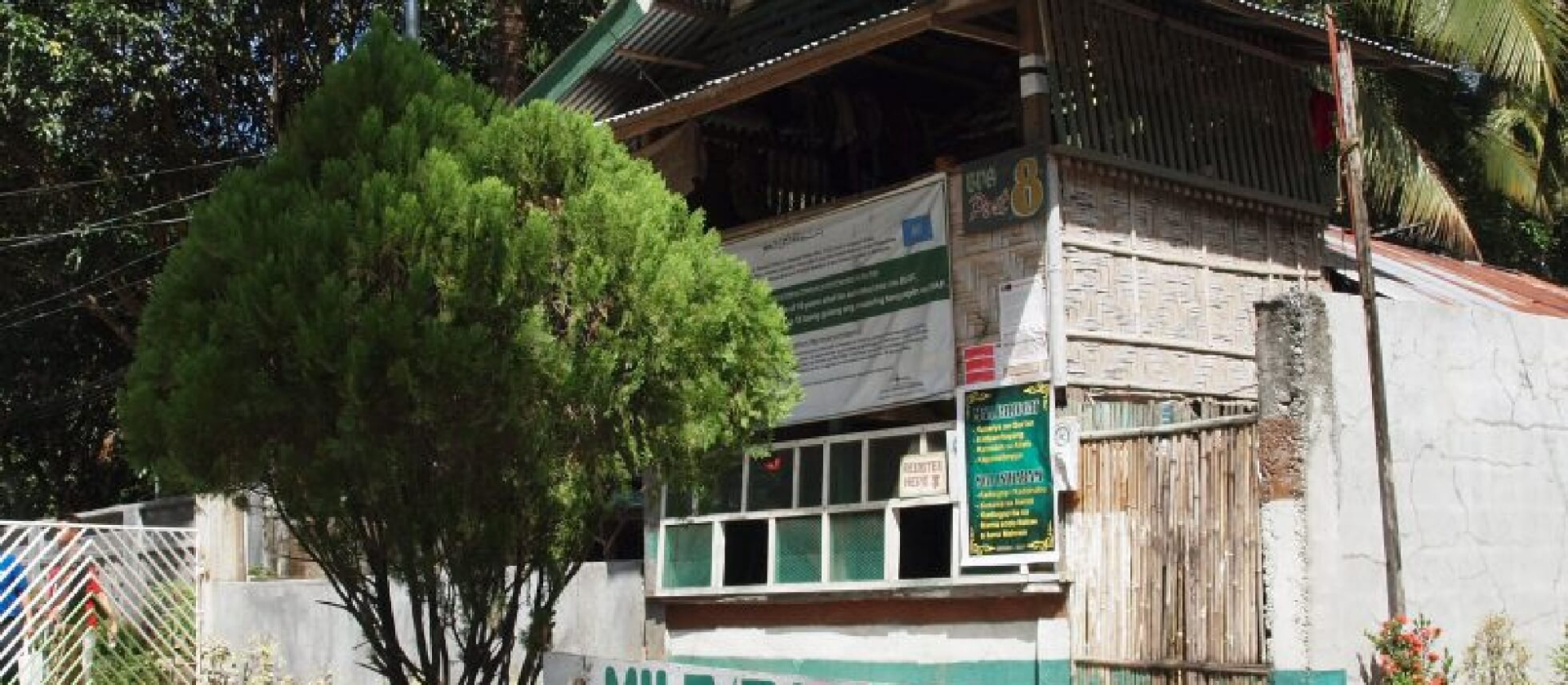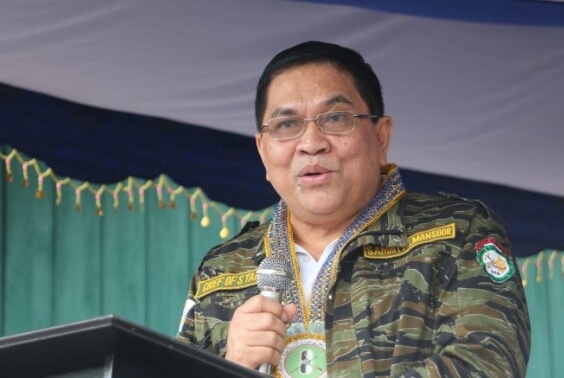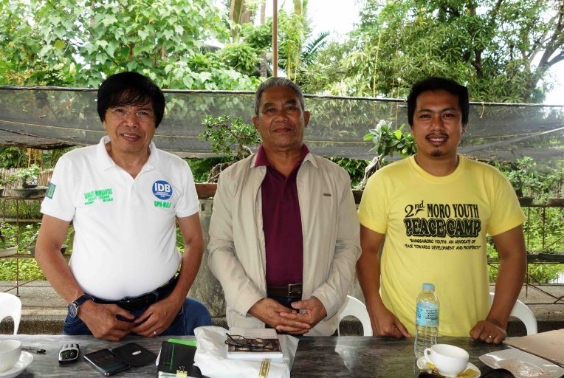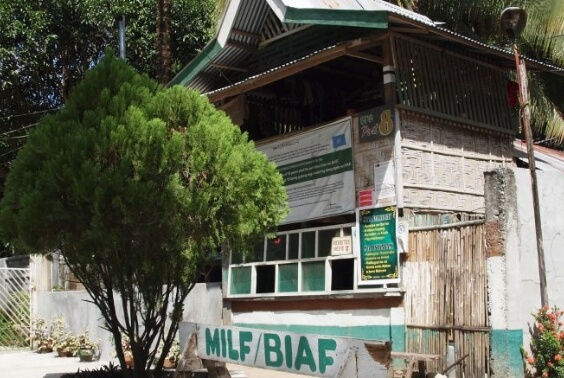- SOUTHERN PHILIPPINES
Decolonize the Philippines, adopt a new constitution

This article was originally published in The GRP, MILF Peace Drafts 2010: Analysis and Comments by Patricio P. Diaz・Rudy Buhay Rodil, MindaNews Publications 2010, pp.24-29, and quoted again in HOMELAND Vol. XXIV, No. 4 (July-August), 2017: 5-8. Though several years have passed since its first publication, we find that the insights this article offers are still valuable. Therefore, we republish it at this APBI website with the permission of the author to make it accessible to wider audience.
Kuala Lumpur, Malaysia. January 27, 2010. The peace negotiating panels of the Government of the Republic of the Philippines (GRP) and the Moro Islamic Liberation Front (MILF) met to exchange position papers based on seven points earlier agreed upon, namely, (1) Identity and citizenship, (2) Government and structure, (3) Security arrangements, (4) Wealth-sharing, natural resources and property rights, (5) Restorative justice and reconciliation, (6) Implementation arrangements, (7) Independent Monitoring.
The MILF complied but the GRP proposed enhanced autonomy, not following the aforementioned seven points. In effect, it offered an amendment to the present Organic Act of the Autonomous Region in Muslim Mindanao. The MILF refused to meet the following day. A similar thing has been offered twice earlier, in 2000 and in 2003. This is the third. They saw no point in the meeting. The two positions are so far apart one is immediately led to believe that no comprehensive compact can be expected within the term of President Gloria Macapagal-Arroyo, before June 30, 2010.
I will not add to the remarkable details and lucid insights assembled in the analysis of my mentor, Mr. Pat Diaz. What I will do is to view the problem from another angle.
In the first place I ask the question. Is it the Moro problem we are trying to solve? Or the GRP problem?
If it is the Moro problem, it has been with us since 1968, almost 42 two years to date.
A series of major Moro organizations have articulated Moro aspirations. The Muslim Independence Movement (MIM) said it wanted to put up an Islamic State in predominantly Muslim areas of Mindanao-Sulu-Palawan (Minsupala). President Ferdinand Marcos responded by appointing its leader, former Cotabato Governor Datu Udtog Matalam, as presidential adviser on Muslim affairs. The organization died but the seed had been sown.
The Moro National Liberation Front (MNLF) emerged immediately after and loudly proclaimed the birth of the Bangsamoro, and their intent to liberate the Bangsamoro from the clutches of Philippine colonialism and establish a Bangsamoro Republic in Mindanao-Sulu-Palawan, their ancestral homeland. The war netted more than 100,000 lives and cost the government more than seventy billion pesos in combat expenses alone. The GRP-MNLF peace negotiations that followed produced the Tripoli Agreement which established the Autonomous Region for the Muslims of Southern Philippines. It took twenty years before the two parties could agree on how to implement. Finally in 1996, they signed the Final Peace Agreement on the Implementation of the Tripoli Agreement, but nearly 14 years have passed and the government has yet to fully implement its provisions. And the government admits it.
Perceiving that the Bangsamoro cause has been compromised, the MILF refused to accept the 1996 agreement and announced its resumption of the Bangsamoro struggle for self-determination. From January 1997 to the present, two big events were happening at the same time, an active war in thirteen provinces of Mindanao-Sulu Archipelago and a peace negotiation. Over the years the MILF has narrowed down its pursuit to the creation of a political entity somewhere in between the present autonomy and independence and very much an integral part of the Republic of the Philippines.
So, if I may reiterate, what is the GRP problem?
Since the time of President Marcos, from the first negotiating panel to the 18th, yes, Chairman Rafael Seguis is the eighteenth panel chair on the government side, the GRP position has been consistent: to uphold national sovereignty and the integrity of the Philippine territory; it agreed to negotiate but only within the framework of the Philippine constitution. The constitutional part became more specific in Article X of the 1987 Constitution. But the Moro problem remains unsolved.
This was why the Tripoli Agreement of 1976 was acceptable to the GRP. It is new in Philippine political history, has 16 paragraphs and paragraph 16 says that the entire agreement was to be implemented in accordance with constitutional processes. It took 20 years for the two parties to agree on what that exactly means. But despite the 1996 accord, the GRP seems hesitant to fully implement it.
Thoughtful military officers who have fought in the Moro front since they were junior officers claim that the military has fought for forty years; between 100,000 to 120,000 lives have perished, 50 percent were MNLF, 30 percent were AFP, and 20 percent were civilians; Php 73 billion have been spent in combat expenses alone. But the Moro problem is still there very much alive and kicking. It is obvious to them the war is not the answer.
In the negotiation front, the constitution is the main GRP framework for solution. The GRP is on its 18th peace panel chair and the same framework has been used. This is perfectly understandable. Every government employee as a matter of fact must swear to uphold the constitution as soon as he or she joins government service. How much more peace panel members who represent the republic through the office of the President. Still the Moro problem remains. Can we also say the constitutional solution is faulty?
It might help clarify a number of things if we review a series of interrelated events in Mindanao history.
The first event is the Treaty of Paris. Every Bangsamoro peace panel, whether MNLF or MILF, claims that they have never been colonized by the Spaniards but the Spaniards included them in their cession of the Philippines to the United States without their plebiscitary consent. As a Mindanao historian who has done more than my share of historical research I know this to be true. As an assertion of our Filipino point of view, I should add that at the time of the Treaty of Paris, December 1898, it is doubtful if there was any part of the Philippines that Spain owned and could cede to the United States because the Filipino revolutionary leaders had declared Philippine independence in June of the same year. The Cordillera was one territory Spain never colonized; the same may be said of Lumad communities which retained their independence through avoidance of contact with the Spanish forces. So, it is not only the Bangsamoro who should complain that they were never asked whether or not they wished their territory to be part of the Philippines; the Filipinos, too, and the Cordillerans and the Lumad – colonizers do not ask colonial victims for their consent. All this, of course, becomes moot and academic because we lost in the war against the Americans. As a consequence, we all became colonial subjects of America, in a colony they now called the Philippine Islands.
The second event is the marginalization of the indigenous Lumad and Moro communities of Mindanao starting with the American institutionalization of the ownership and disposition of land through the imposition of the regalian doctrine and the torrens system. This means that the United States has become the owner of the new Philippine colony and reserves the right to pass laws to dispose of the land to its inhabitants. The US colonial government started the process by passing a law declaring as null and void all land grants made by traditional leaders if made without government consent. At that point, 1903, no such traditional land grant had government consent. The legislative mill then churned out the public land laws and implemented the government resettlement program. Vast territories were opened for resettlement from north to south of the archipelago. This was how Filipino settlers from Luzon and the Visayas inundated Mindanao. In less than sixty years from the inauguration of the agricultural colonies in Cotabato in 1913 to 1970, the process displaced the Lumad and Moro communities from their traditional territories. And this was all legal, mostly at least, executed by government with government support. Colonial government, and subsequently the Philippine government created the very conditions that marginalized the native Lumads and Moros in their own lands. The settlers who took part in the program unwittingly also contributed to this marginalization. So, now we have the Moro problem. And the Lumad problem. Threatened with extinction and aspiring to survive with dignity, both must now assert their right to self-determination within their respective ancestral domains.
The third event is the grant of independence to the Republic of the Philippines in July 1946. Filipino political leaders were responsible for the series of events that led to the Jones law in 1916, the Tydings-McDuffie Act of 1934 and the Treaty of General Relations in 1946 which recognized the grant of independence. The 1935 Constitution defines Philippine national territory in Article I, Sec. 1, as follows:
“The Philippines comprises all the territory ceded to the United States by the Treaty of Paris concluded between the United States and Spain on the tenth day of December, eighteen hundred and ninety-eight, the limits which are set forth in Article III of said treaty, together with all the islands embraced in the treaty concluded at Washington between the United States and Spain on the seventh day of November, nineteen hundred, and the treaty concluded between the United States and Great Britain on the second day of January, nineteen hundred and thirty, and all territory over which the present Government of the Philippine Islands exercises jurisdiction.”
Notice that this constitution, as does the 1987 constitution, upholds the legitimacy of the Treaty of Paris. Our sovereign republic is a direct product of colonial logic. The official line of the United States government was that there were no nations here (in the Philippine Islands), only different tribes fighting one another. But somewhere along the way, American officials made sure that the Sultan of Sulu waived his sovereign powers in favor of the United States of American. So, in the end, when it granted independence it was only to one Republic of the Philippines whose sovereign people are called Filipinos.
The Bangsamoro Struggle is for self-determination.
The Bangsamoro leaders’ political position challenges the very foundations of our present sovereign state. There is no question about this. And to defend national sovereignty and maintain the integrity of national territory, every government of the republic must uphold the constitution. And in any political negotiation it conducts with the MNLF or the MILF it is duty-bound to use the constitution as it guide and framework. But this is the very constitution that upholds the legitimacy of the Treaty of Paris! This is the very constitution that upholds the primacy of colonial logic in the formation of our Philippine republic. This is the very same logic that led to the marginalization of the indigenous peoples of Mindanao. And now, is the government saying that we should use the same tool and the same colonial logic to correct the historical injustice perpetrated upon the Bangsamoro and the Lumad?
If we uphold the legitimacy of the Treaty of Paris through our constitution, must we also de-legitimize the celebration of our national independence on June 12, 1898? If we do, this will in effect render meaningless President Diosdado Macapagal’s order to move celebration of independence from July 4 to June 12.
If we uphold the legitimacy of the Treaty of Paris through our constitution, are we not in fact upholding colonial principles against democratic principles?
To solve the Bangsamoro problem, it seems that we have to make a number of major decisions. One, we have to complete the decolonization of the country and declare the Treaty of Paris as a colonial legacy that must go. Two, uphold the legitimacy of the Sultanates of Sulu, Sultanates of Maguindanao as de facto states in their own right at the time of the Treaty of Paris. Three, reorganize the Philippine republic on the basis of consent of the governed. Needless to say, we have to adopt a new constitution.
Without this new constitution, the Bangsamoro problem will refuse to go.
The war between the Moro National Liberation Front (MNLF) and the Philippine Government is technically over. A Final Peace Agreement on the Implementation of the Tripoli Agreement was signed in September, 1996 at Malacañang. It was a protracted peace process, stretching from January 1975 to September 2, 1996. But today, nearly fourteen years after, MNLF leaders have not stopped complaining that several provisions of that agreement remain to be fully implemented; government representatives have admitted this but still no decisive moves are being made to make up for it. A tripartite body has met a number of times to precisely resolve this but have not really agreed on how to facilitate the very process of implementation. If we total all the years put into the GRP-MNLF/MILF peace process, we are talking about a total of 35 years. Add to this the period from 1968 when the Muslim Independence Movement (MIM) proclaimed Moro desire for independence and the establishment of an Islamic State in predominantly Muslim areas of Mindanao, we are facing a problem pestering for about 42 years.
Sensing that Bangsamoro interest had been compromised, the Moro Islamic Liberation Front (MILF) refused to accept the terms of the 1996 Final peace accord and resumed the struggle for Bangsamoro self-determination. Despite this decision the leadership of the organization consented to enter the peace process at the same time that its armed combatants remained ready for war.
This conflict has wasted away no less than 100,000 lives; the government has spent no less than Php 73 billion between 1970 and 1996.
What really is the problem? Why cannot the government solve it?
If we look closely at the basic political declarations of the MIM, the MNLF and the MILF, we can safely conclude that what they want for the Bangsamoro is political self-determination. But what exactly is political self-determination? It is new in Philippine political history and is still evolving. In the final analysis it depends on the results of the negotiations. And there have been a number.
It is true that the MIM wanted an Islamic state in predominantly Muslim areas of Mindanao-Sulu and Palawan but there was a compromise when its leader Datu Udtog Matalam, former governor of the undivided province of Cotabato, accepted the role of presidential on Muslim affairs from no less than President Ferdinand Marcos.
It is true the MNLF wanted a Bangsamoro Republic for Mindanao-Sulu-Palawan, its claimed Bangsamoro ancestral homeland but in the course of several rounds of the GRP-MNLF negotiations in 1975-96, it compromised and agreed to autonomy within the Constitution for thirteen provinces of Mindanao-Sulu-Palawan under the sovereignty and within the territorial integrity of the Republic of the Philippines; and the entire agreement in 1976 was to be implemented in accordance with constitutional processes. As a result of two plebiscites, only five of the thirteen provinces opted to become part of the region now called the Autonomous Region in Muslim Mindanao.
It is true as well that the MILF initially wanted independence but when it agreed to enter into peace negotiations, it also expressly gave up independence. Its peace negotiators, however, stressed that what they want is a political entity in between autonomy and independence, forming an integral part of the Republic of the Philippines with clearly defined terms of relationship with the central government.
To all of them, what they seek is a negotiated political settlement. They want to correct a historical injustice. They have been annexed to the Philippines without their plebiscitary consent; this time they want to express their consent but in terms acceptable to them.
What is the historical injustice?
The historical injustice was committed in a series of events, the highlights of which were the following. They became part of the Philippines without their plebiscitary consent, through the Treaty of Paris, through their loss in the Moro-American war and the declaration of Philippine independence on July 4, 1946. They lost their nationhood, as sultanates of Sulu and Maguindanao, as Pat a Pongampong ko Ranaw or the Four Principalities of Lanao.
Second, through the application of the regalian doctrine, the torrens system of landownership and the resettlement program , they came numerical minorities in their own traditional lands.
In short, now they were not anymore running their own lives; they have lost their political self-determination.
What is the government response?
War and peace talks. War to defend the integrity of Philippine territory and oppose the challenge to Philippine sovereignty. The peace negotiation was always premised on the same thing. The constitution remains the unchanging framework within which the government negotiators would conduct their tasks.
Military generals have admitted to have fought for forty years and the problem has not been solved, clearly indicating that armed force is not the solution to the Moro problem.
But how may we explain government behavior?
It seems it has not fully grasped the full import of the Bangsamoro problem, from its roots to its ultimate solution.
It is too focused on the constitutional framework.
When conflict arises between them we say nagkasira ang kanilang loob (the union between them is severed). How did this come about? Conflict does not drop from sky. It builds up slowly from within. It may have started with a slight discomfort, from a wrongly delivered word. Or gesture. Or body language. Then the offended person starts imagining and brooding over the hurt. Then this graduates into irritation, then into anger. The distance from anger to rage when the wounded feeling erupts into physical violence is thin, so thin that one may not perceive the shift or movement. Then, we have stories of people so blind with rage that when he recovers his senses his account is that he did not know what he was doing, nabulagan siya, hindi niya alam ang kanyang ginagawa (he was blinded with rage, he did not know what he was doing).
The severity of conflict indicates the appropriate level of negative feelings between or among individual selves. A hurtful verbal exchange, physical violence like a fist fight, rido, gang war, rebellion, war of national liberation, war between nations, these all reflect various levels of sama ng loob or sakit sa loob, di na matiis, di na makapagtimpi (intense hurt or bad feelings, cannot be tolerated anymore, impossible to bear) .
When conflict quickly evolves into a level wherein those involved entertain the desire to exterminate each other, this is when negative emotions combine with premeditation and planning and strategy. Assembling resources comes as a matter of fact.
This is what has happened among the Bangsamoros of Mindanao. This, the Philippines and her governments under past and present constitutions have caused to happen. This, a new Philippines under a new constitution can undo. No less.








